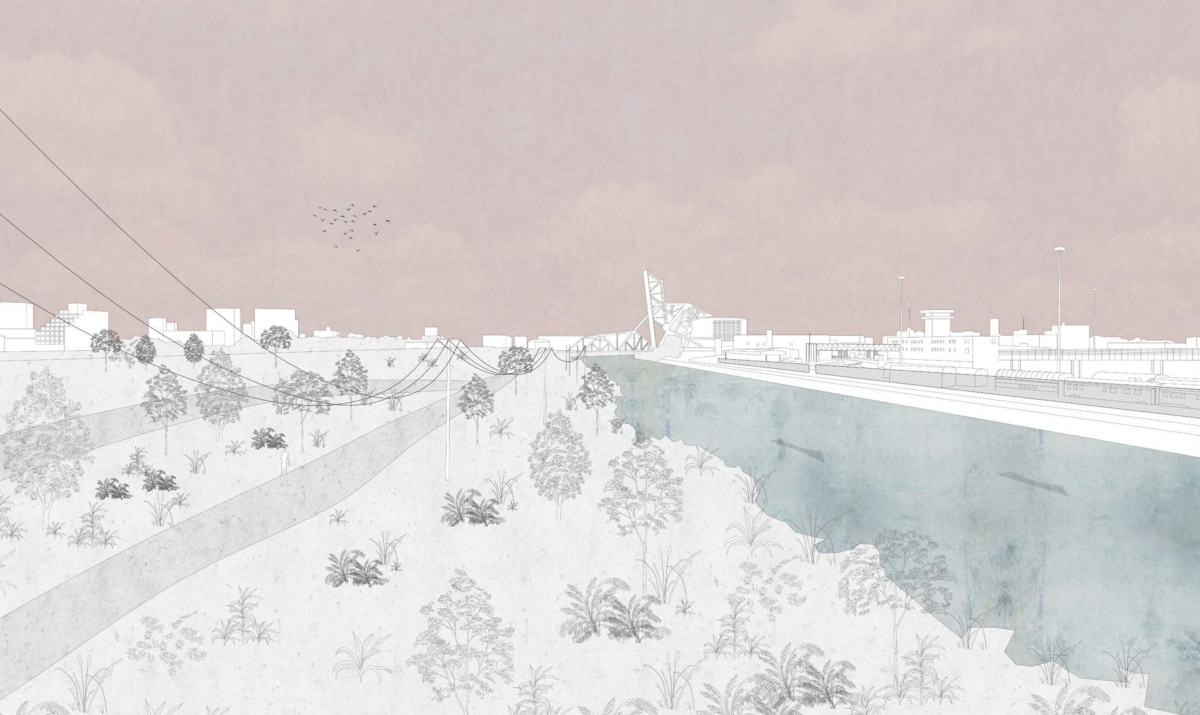Rezkoville is one of the last abandoned natural voids located in the immediate sur-roundings of downtown district called The Loop in Chicago, Illinois. The railroad yards used to dominate the site before the Chicago river that flowed through it was straightened in 1930s. Subsequently, the greenery took over the contaminated land while several developers purchased and sold the land, one of them being Tony Rezko, by whom the site was named.
Presently and at its very peak moment the site of 740 x 310 m seems to accommodate less than any potential plot of similar size. The first question that arises from it is how to determine demanded functions and forms for possible intervention. Considering that conventional program-planning oriented design can hardly address the challenge, the proposal of Capturing Nothingness provides the possibility to avoid the planning of definite functions that could take over the site.
The concept of having nothingness enclosed was triggered by an essay called Nothing Matterswritten by Robert Somol. It claims that nothing makes everything else possible and that it always turns into architecture. It is what keeps us going from one dead end to another. Similarly, the project starts as nothing, that is physically enclosed by a structure with the opportunity turn into anything. In brief, the project evolves in three steps. First the framework is being set to enclose the empty space. The second step is about structural transformation based on spatial parameters that represent a direct link between the location and intervention, such as urban grid, multilevel horizontal movement, statics, vertical communication, greenery, etc. Lastly, nothing evolves into architecture and therefore becomes something materialised and inhabitable.
From the beginning the idea is based on conceptual speculation, that the framework will be filled in. A rigid and simple boundary system with no built-in hierarchy except for the possible communications might appear as neutral, but suggests and stimulates a program. Once the system is occupied, the ratio between the voids and fill-ins dictates the composition that can vary from open to dense in both horizontal and vertical directions.
A prototype framework system in many aspects follows and resembles the system of a city, scaled into a neighbourhood. It provides various spatial solutions, accommodates numerous functions and brings variety of programs and their users closer together.

